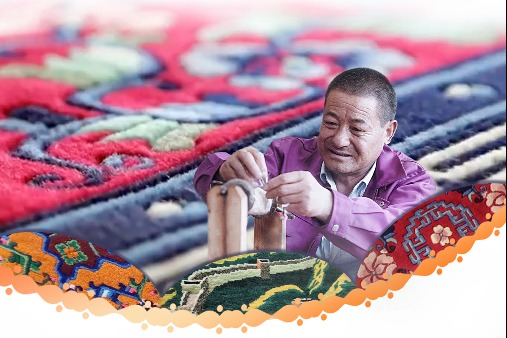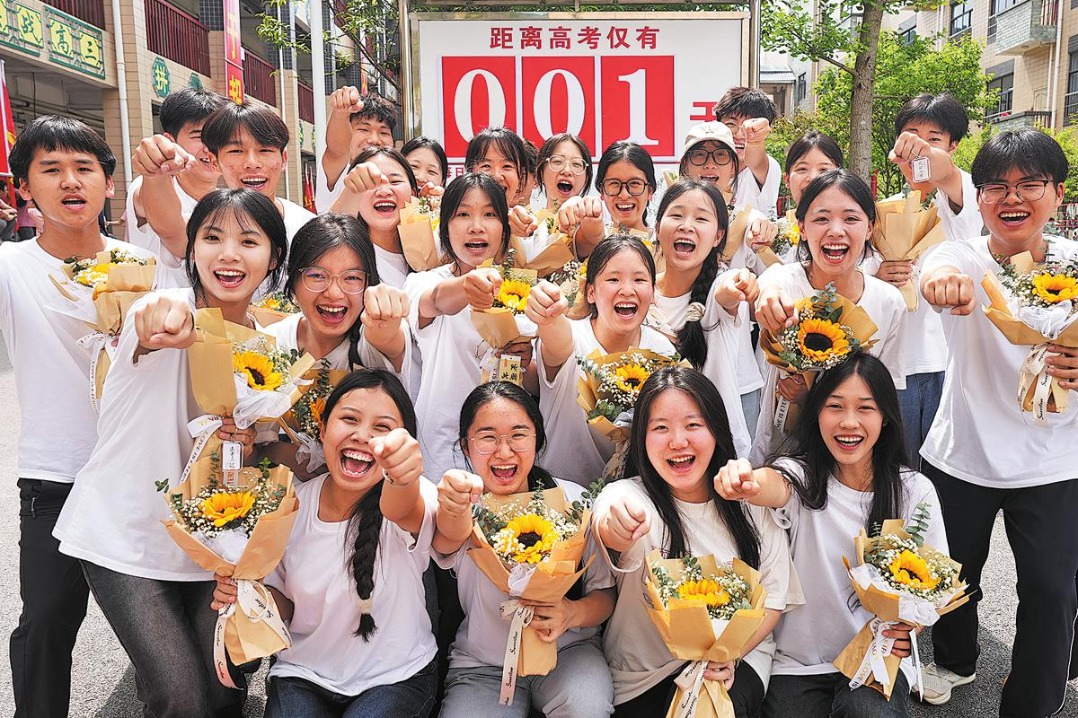Athletes get a winning menu on diet of success
Food, its preparation and serving, played a lip-smacking role in a fascinating Winter Olympics, Yang Feiyue reports.

Amid the thrills and spills in the arenas of the Winter Olympics, one prize performer perhaps garnered the most attention on social media. Giving the athletes the appetite, literally, to succeed, food, not just any haphazard combination, but a carefully selected group of nutritional ingredients, has emerged as a clear Olympic champion.
Napoleon said an army marches on its stomach, equally, the ability of athletes to compete is determined by what they have digested.
A total of 678 dishes were prepared, catering to various tastes and needs at the three competition zones of Beijing, Yanqing and Zhangjiakou, according to the organizing committee's village planning and operation department.
The menu, developed over nearly four years, was designed to meet the athletes' comprehensive dietary needs and requirements while also taking religious diversity into consideration.
Traditional Asian cuisine, such as sushi, udon and stir-fried kimchi, as well as Western foods like pizza and pasta, were readily available to satisfy diversified tastes.
In addition, a range of vegetarian and halal dishes were served, with kosher requirements available to meet the specific dietary needs of athletes from different cultures.
Authentic Chinese food was, naturally, also on offer, from Peking duck, kung pao chicken, mapo tofu, dumplings to regional specialties, such as spicy Sichuan Dandan noodles, hotpot and Chinese BBQ pork.
Chinese cuisine accounted for one third of the menu, according to the organizing committee, and some of the dishes were innovative creations by experienced Chinese chefs.
Chen Aijun from Baoding, Hebei province, designed six courses featuring distinctive local elements and auspicious messages for athletes at Zhangjiakou.
His dishes featured lotus flowers as well as fish and shrimp, typical of a northern Chinese water town.
"I'm especially thrilled that the Winter Olympics could be held on my 'doorstep'. I wanted to contribute my part to the Games in my own way," Chen says. He has been in the catering business for 41 years and he wanted to share the essence of local dishes with the athletes.
At the Genting Grand Hotel in Zhangjiakou, the catering service team started preparations at 4 am every day, ready to dish things up to the athletes from 6 am.
Everything was sampled and tested to ensure quality.
"We provided for more than 680 foreign guests altogether, with dining, accommodation and traffic services, including over 300 delegates and athletes," says Liu Ping, an official in charge of logistics for the Games at Zhangjiakou's Xiahuayuan district.
"Everything has gone well so far," Liu says, noting that the team is now gearing up to serve the Paralympic Winter Games, which start on March 4.
At Yanqing Winter Olympic Village, chefs have gone out of their way to help athletes better appreciate Chinese food.
"Many foreign athletes didn't know how to properly enjoy spicy hotpot and instant-boiled mutton, (such as) how much sesame sauce and Chinese chives should be put in," says Yang Chen, head chef at the athletes' canteen in Yanqing.
They concocted the sauce with the right amount of ingredients for the athletes.
"We just want to spread Chinese gourmet food culture," Yang says.
The Yanqing Olympic Village hosted 1,300 athletes from 87 delegations.
More than 160 chefs were working three shifts to ensure an efficient 24-hour canteen operation.
New dishes were plated every two hours, and all dishes were served at above 65 C, ensuring athletes always had hot meals, according to Yang.
Approximately 200 dishes were available and they were rotated every 8 days to satisfy different tastes.
Each dish had an introductory card nearby, providing the name of the dish, nutritional information and a list of ingredients, so athletes could stay on top of their intake.
In Beijing's Haidian district, a total of 28 catering service providers were working around the clock for the Winter Olympic events in Haidian, such as the Capital Indoor Stadium and the Wukesong Sports Center.
The district market supervision authority stepped up efforts on every link of the catering chain, including food processing, cleaning, cooking, delivery and freezer storage management.
"We carried out the whole chain risk screening on the key links," says Xia Pingping, an official with the district supervision bureau.
" (We) would ensure the rectification of any problems that were found in a timely manner," Xia says, adding that all food had to be above 75 C before being sent to the packaging workshop.
Everything had to meet stringent food safety standards, from point of purchase to the dining table.
The supervision authority guaranteed food safety as well as the cleanliness of tableware on a daily basis.
All personnel who were involved in the catering workshops had to wear protective clothing and go through 25-second sterilization every time they exited and re-entered the designated workplace.
No more than four hours elapsed from the completion of the dishes to them being served.
The meticulous and thoughtful food preparation work received rave reviews from International Olympic Committee officials and the world's athletes.
"If I stay in your village for three days, I will gain another 10 pounds," IOC President Thomas Bach said in early February when he inspected the overall operation of Yanqing Olympic Village. "The food here is so delicious."
American snowboarder Tessa Maud took advantage of her Olympic time exploring the assorted food from sweet and sour pork, pork dumplings, spicy tofu, and Dandan noodles, all of which made her spoiled for choice, because "everything is so good".
She documented details about her life in Beijing via TikTok, and those about her cafeteria experiences were hailed by many viewers.
The 18-year-old treated herself to one more big meal at the cafeteria of the athlete village on Feb 12 before leaving Beijing for home.
Julia Marino, from the United States, who won the silver medal in the women's snowboard slopestyle, told NBC that her favorite was the dumplings.
"I've probably had like 200 dumplings since I've been here," she said.
Snowboarding halfpipe contestant Jenise Spiteri, who was representing Malta, said Chinese food was her favorite, and she had been eating six red bean buns every day during her stay.
"I started eating them on the first day. And then for breakfast, lunch and dinner," Spiteri said in an interview with Chinese media.
However, surprisingly, little sesame balls turned out to be her favorite Chinese snack there. "You know the little sesame balls… deep fried, rolled with sesame seeds, chewy with red beans inside," she said.
"I want to eat a hundred of those."
At the last meal in the Olympic Village, Spiteri didn't forget her buns.
"Goodbye to the amazing workers who served our food every day," before smiling for a photo taken with canteen workers as she held a red bean bun.
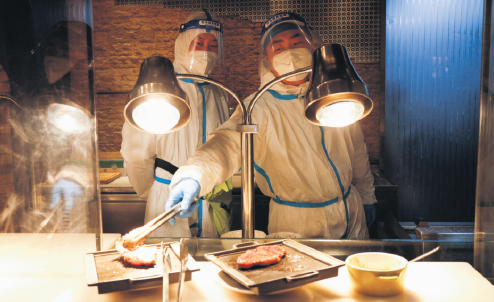

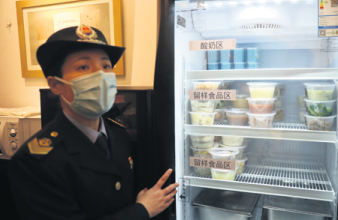
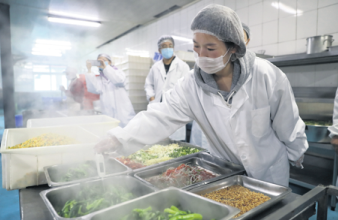

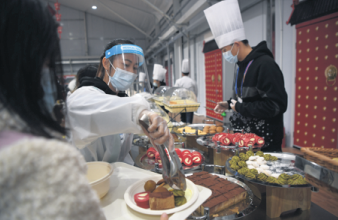
Today's Top News
- He Lifeng to visit the UK, hold first meeting of China-US economic, trade consultation mechanism
- Ecosystem of humans and machines key to ensuring cybersecurity
- China, Canada vow to deepen bilateral bond
- Keep two-state solution alive, says UN chief
- PBOC injects more liquidity to spur growth
- Leaders' phone call sets course of Sino-US relationship
















